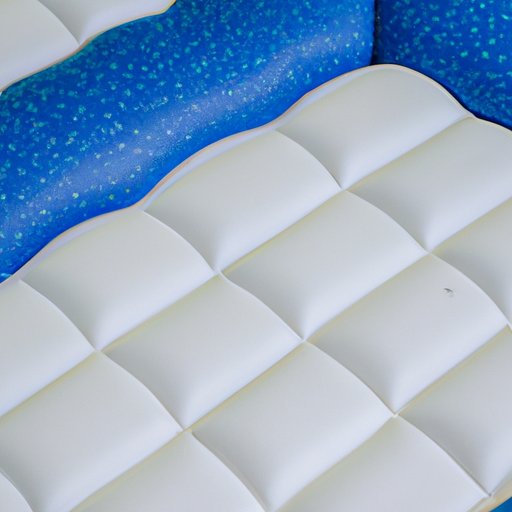Introduction
Bed sores, also known as pressure ulcers, are lesions that form when there is prolonged pressure on the skin. They are most common in people who are bedridden, wheelchair-bound, or who have limited mobility due to age or illness. If left untreated, bed sores can lead to infection, tissue death, and even death in some cases.
Clean Bed Sore Regularly
Cleaning bed sores regularly is one of the most important steps in treating and preventing them. The area should be kept free from dirt, debris, and bacteria, which can aggravate the sore and make it worse. To clean the area, use a mild soap and warm water, and gently pat dry with a soft cloth or towel. Be sure to avoid scrubbing or rubbing the area, as this can cause further irritation and discomfort.
It’s also important to keep the area around the bed sore clean and dry. Avoid using lotions, creams, or oils near the sore, as these can trap moisture and create an ideal environment for bacteria to grow.
Change Patient Position Frequently
One of the best ways to prevent and treat bed sores is to ensure that the patient is not sitting or lying in one position for too long. Changing positions every few hours can reduce pressure on the skin and help to reduce the risk of developing bed sores. It’s also important to ensure that the patient is comfortable while they are in different positions; pillows, blankets, and other support items can help to make the patient more comfortable and reduce the risk of bed sores.
When changing positions, it’s important to move the patient slowly to avoid jarring the skin. It’s also important to check the skin regularly for signs of redness, discoloration, or tenderness, which may indicate the development of a bed sore.

Use a Mattress Designed to Reduce Pressure
Using a mattress designed to reduce pressure can also help to reduce the risk of bed sores. These mattresses are made with special materials that help to distribute body weight evenly, reducing the pressure on any one area of the body. This helps to reduce the risk of developing bed sores, as well as helping to reduce existing bed sores.
There are many types of mattresses available, including air mattresses, foam mattresses, and water mattresses. Each type has its own benefits, so it’s important to speak to a healthcare professional to find the right mattress for your needs.
Provide Proper Nutrition and Hydration
Proper nutrition and hydration are also important for treating and preventing bed sores. Eating a balanced diet and drinking plenty of fluids can help to keep the skin healthy and reduce the risk of bed sores. It’s also important to make sure the patient is getting enough vitamins and minerals, such as Vitamin C, zinc, and iron, which can help to promote healing.
If the patient is unable to eat or drink enough to meet their nutritional needs, a healthcare professional may recommend supplements or intravenous (IV) fluids to help keep the patient hydrated and nourished.

Apply Medicated Ointments or Creams
Medicated ointments or creams may also be recommended by a healthcare professional to help treat and prevent bed sores. These products can help to reduce inflammation, promote healing, and protect the skin from further damage. It’s important to follow the instructions provided by the manufacturer or healthcare professional when using these products.
In addition, it’s important to avoid using any over-the-counter products without consulting a healthcare professional, as some of these may contain ingredients that could irritate the skin and make the bed sore worse.

Use Special Cushions for Pressure Relief
Special cushions designed for pressure relief can also be used to reduce the risk of developing bed sores. These cushions are usually made from foam or gel and are designed to evenly distribute the patient’s body weight and reduce the pressure on any one area of the skin. They can also help to reduce existing bed sores.
It’s important to choose a cushion that is the right size and shape for the patient’s body, as this will help to ensure that the cushion is providing the necessary pressure relief. In addition, it’s important to check the cushion regularly for signs of wear and tear, as this can affect its effectiveness.
Seek Professional Medical Treatment as Needed
If bed sores are present, it is important to seek professional medical treatment as soon as possible. Depending on the severity of the bed sore, treatment may include antibiotics, pain management, wound dressings, or even surgery. A healthcare professional can provide the best advice on how to treat the bed sore and prevent it from worsening.
It’s also important to follow any instructions given by the healthcare professional, as this can help to ensure that the bed sore is treated properly and quickly.
Conclusion
Bed sores can be painful and difficult to treat, but with the right care they can be prevented and managed effectively. Regularly cleaning the area, changing position frequently, using a mattress designed to reduce pressure, providing proper nutrition and hydration, applying medicated ointments or creams, using special cushions for pressure relief, and seeking professional medical treatment as needed can all help to reduce the risk of bed sores and promote healing.
If you or someone you know is at risk for developing bed sores, it is important to take action to reduce the risk and seek professional medical treatment if necessary. Taking these steps can help to ensure that bed sores are treated quickly and effectively.


